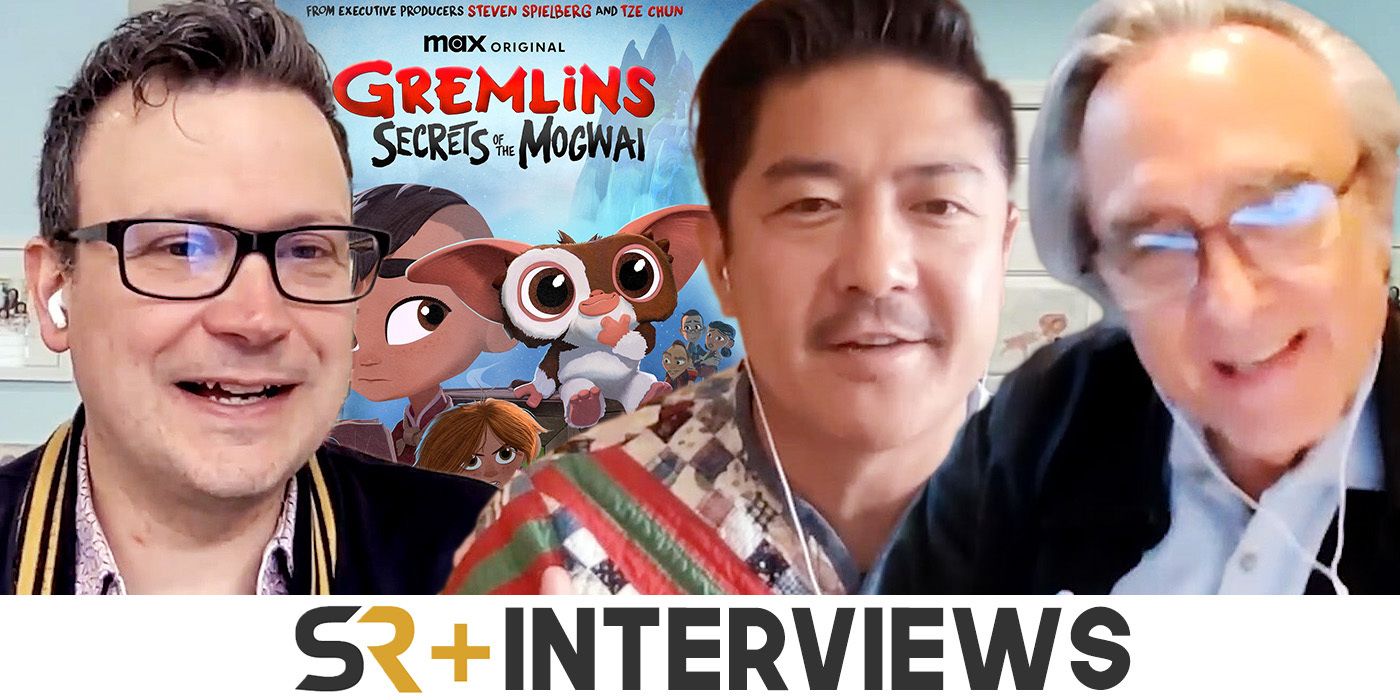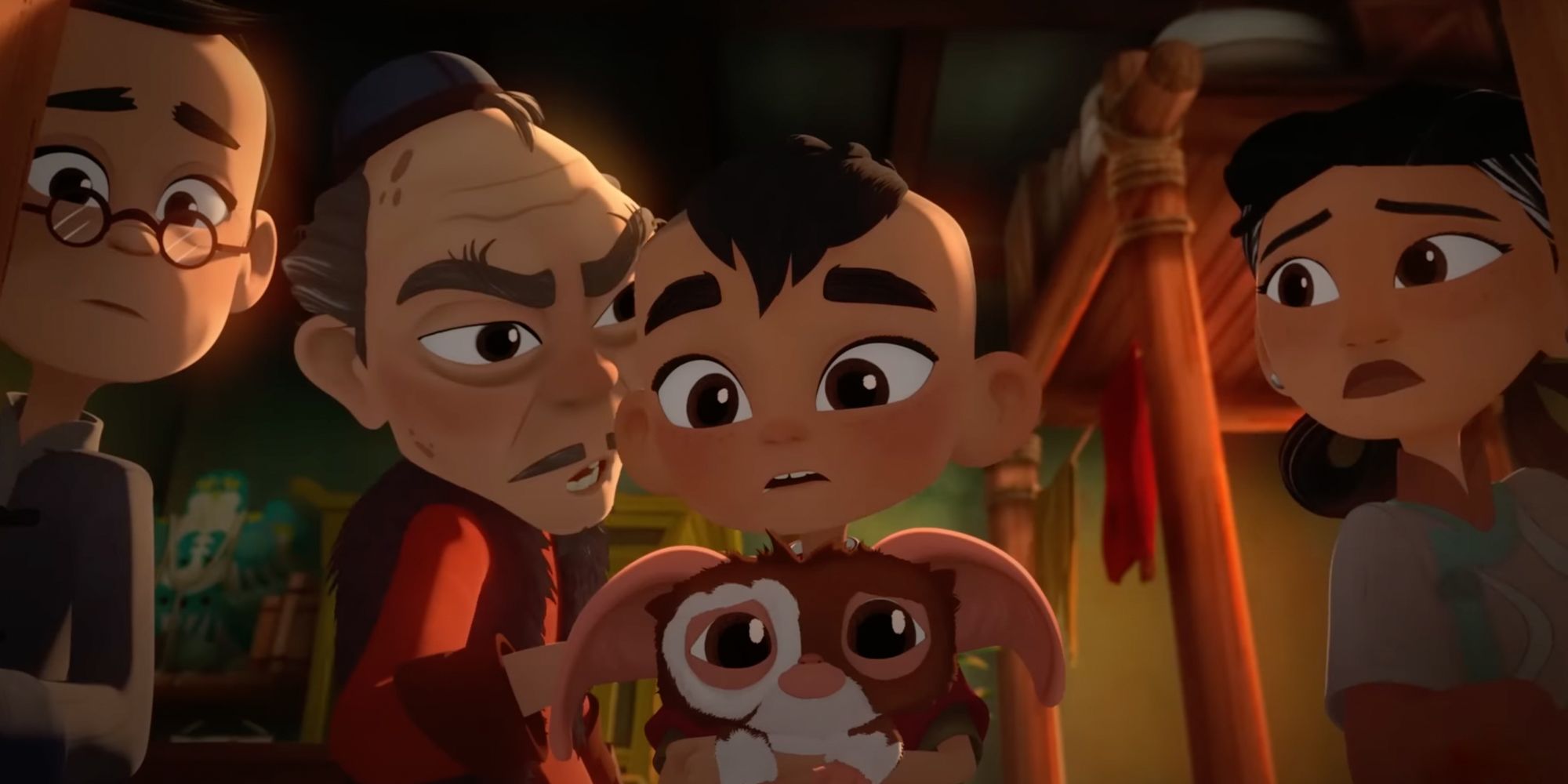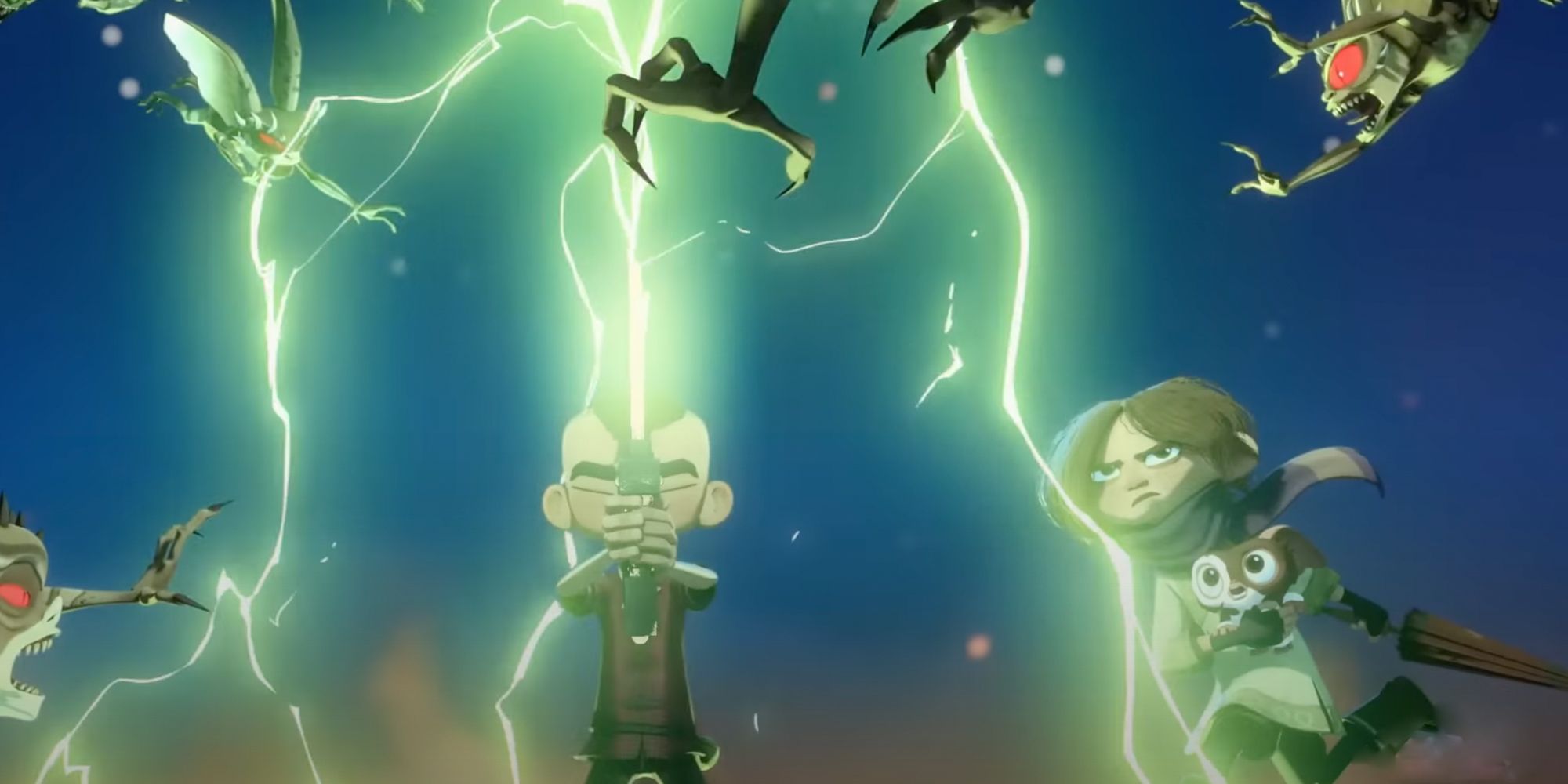After being essentially dormant since 1990, the Gremlins franchise is back with Gremlins: Secrets of the Mogwai. A prequel to the original 1984 film, Gremlins: Secrets of the Mogwai follows a young Sam Wing and tells the story of his first meeting with the adorable Gizmo. The series was produced by Amblin Television, with Steven Spielberg reprising his role in the original films as executive producer.
Gremlins: Secrets of the Mogwai was also created with the help of showrunner Tze Chun, executive producer Brendan Hay, and consulting producer Joe Dante, who directed the original Gremlins and its follow-up, Gremlins 2: The New Batch. Chun’s previous work includes the hit Fox series Gotham, and Hay was head writer on the infamously unreleased Star Wars: Detours. Together, the creative team behind Gremlins: The New Batch was able to preserve what was unique about the original films while still expanding the lore of the Mogwai in delightful and exciting ways.
Tze Chun, Brendan Hay, and Joe Dante spoke with Screen Rant about revisiting an iconic franchise with Gremlins: Secrets of the Mogwai.
Tze Chun, Brendan Hay & Joe Dante on Gremlins: Secrets of the Mogwai
Screen Rant: Tze, I’ve seen your very excited tweets about how your name is next to Steven Spielberg’s as exec producer. It’s been fun to watch you be excited about that. Did you get to have any conversations with him as this was coming together?
Tze Chun: Very early on, we pitched him the entire show. We had some artwork, it was me and Brendan, and I was trying to play it cool but I also stress-ate seven pieces of fried chicken in the parking lot, in my car, from Popeyes in Burbank. I find it really calmed the nerves. One of the things that I found so wonderful after pitching to Spielberg was [that] the first thing he [did] was [ask] if Joe was happy with it. I thought that was just such a cool thing after their collaboration over the years, that that was the very first thing that he wanted to know, and we’re so glad to have Joe come on as a consulting producer for the show.
Joe, it’s amazing that Gremlins films that you were a part of hold up so well that almost 40 years later, people are so excited to watch this series and revisit this world. Is there something that you would say made those so special that was really important to carry over into the series?
Joe Dante: I think the combination of light and dark the series manages to maintain was pretty important to the success of the first movies. Also, I think the character of Gizmo is really the key to why those movies have been so successful over the years. In the original version of the script, which we almost shot, Gizmo turned into the bad Gremlin, after about a half an hour. Steven Spielberg, in his wisdom, fell in love with Gizmo and gave us the impossible task of making sure that he was the hero of the movie with only four weeks before we were supposed to shoot.
We had this little bucket of bolts that we were trying to make into something believable, and we managed to pull it off, but I think that’s been the key to the continuing popularity of the movie. But none of us who worked on this movie had any idea that it would be remembered all these years later. You just don’t think that way when you’re making a movie. You think it’s kind of finite; you make it, it’ll come out, and someday day it’ll be on TV, and that’s about it. But this has become a phenomenon now; it’s got a whole animated series.
Brendan, in looking you up I realized you worked on Star Wars: Detours, which has such an unfortunate, sad story. Did that experience give you any hesitation coming into another beloved franchise with this?
Brendan Hay: No. If anything, it fueled me more to get a crack. It was so much fun to make Detours [and to get] the chance to kind of play with somebody else’s toys like that. The two franchises that shaped me growing up were Star Wars and Gremlins, so I had a blast. Unfortunately, nobody got to see the blast we had in that particular case, but no.
Going back to what Joe was saying of how part of why [Gremlins] has had this life is that it really stays with people. Especially, I think, a lot of us saw Gremlins as a kid. As somebody who saw it in a theater probably a little earlier than I should have based on my age, it absolutely gave me nightmares, yet I also absolutely went out and was reading the storybooks and had the cassette read-along type thing, because I just wanted to keep experiencing it even though I was still having the nightmares. It just shows that Gremlins is going to hang around, and the chance to play with something like that, that is beloved, be it Star Wars or Gremlins–I always want to take that chance.
Tze, I really love that you expand the magic of this series even beyond the Mogwai and Gizmo. How did you go about figuring out what you wanted to expand this world, and what you wanted to bring in?
Tze Chun: One of the things that we were really thankful for when we were working with Warners and Amblin was [that] they were always encouraging us to deepen the Mogwai mythology. There’s not just a fourth rule that we introduced in the series, but there’s also a deep dive into why the Mogwai exist in the first place, [and] why they were created.
Beyond that, 1920s China, and Chinese mythology, spirits and creatures and monsters are the things that made me scared when I was a little kid. [They are] stories that my parents told me. To me, it was just such a great backdrop and something to weave through the series, because Chinese spirits and monsters are also kind of like the Mogwai in that they have rules, they’re scary, they’re really funny, and they all have their unique big personalities. We’re really excited for the guest cast [members] that populate the series and play all the recurring characters and guest roles in the show.
Joe, when you were first making the first film and the sequel, were you thinking about ways to expand the story that made it into the series, or that might make it into future projects?
Joe Dante: In a word, no. First of all, for the first movie, it was just getting it finished. It was an impossible task, and we were all exhausted, and we didn’t even know what we had. Then it became this big, big phenomenon, and then they came to me and said, “Well, we want another one, but we don’t understand what you did the first time, so we’ll let you do whatever you want. But make sure you do it.” That’s how I got to make a movie as weird as Gremlins 2. [It was] much to their chagrin when they came out to try to make another Gremlins movie because they didn’t understand either one of them out. They were trying to figure out, “What are we going to do?” Over the years, these things grow, and as has been said, I think when you show things to kids when they’re young, it stays with them. The majority of people who fell in love with these movies fell in love with them when they were, as Brendan said, maybe a little bit too young to see them.
Brendan, is there a particular character that you had kind of the most fun either expanding, like Sam Wing, or creating for this series?
Brendan Hay: Yeah, one of each, actually. On the expanding front, the pure joy I found in trying to brainstorm evil Mogwai gags… I honestly could fill five seasons or more of just the jokes. That was the most fun by far, and [was it was like], “This is your chance to do Looney Tunes.” Joe, early on, gave the great hint of “You can never go wrong by having a Gremlin try and do human things; that is just a great source for comedy,” and he’s right. It was just so much fun to play with that.
On the creating side, [my favorite was] Matthew Rhys’ character on our series–our villain Riley Green. It was just so much fun to write his dialogue. Matthew was having so much fun with his performance, and he was getting to use his natural Welsh accent for once. It’s just such a commanding unique delivery he had [with] everything. [I enjoyed] writing a villain who kind of even owns his villainy in a weird way. He just wants things that he should not have. He is a cultural co-opting villain for our times; he was just so much fun to write.
Tze, I love that you landed on this time period, this part of the world, and this story. Were there other ideas you had or places that you saw this series going before you landed where you did?
Tze Chun: This was kind of the very first thought that came up. This was like the very first take. Of course, when talking to Joe, and when we brought Brendan on, and [thanks] the writers’ room and all of our cast and crew, it really all developed and snowballed from this initial idea. At every stage, as we brought in more people, it just ended up getting plussed, because our cast and crew were really incredible.
In terms of other ideas, we have a lot of concepts for seasons going forward if we should be so lucky. I think one of the goals for everybody in the writers’ room and the crew was just to make a show that the whole family can enjoy together. It’s for fans of the original series and for new fans, and we really hope that this is the start of more Gremlins in our lives.
About Gremlins: Secrets of the Mogwai
“Gremlins: Secrets of the Mogwai” takes viewers back to 1920s Shanghai where the Wing family first meets the young Mogwai called Gizmo (AJ LoCascio). Voiced by Izaac Wang, Sam Wing (future shop owner Mr. Wing in the 1984 “Gremlins” film) accepts the dangerous task to take Gizmo home and embarks on a journey through the Chinese countryside. Sam and Gizmo are joined by a teenage street thief named Elle (Gabrielle Nevaeh), and together, they encounter—and sometimes battle—colorful monsters and spirits from Chinese folklore.
Also back soon for our other Gremlins: Secrets of the Mogwai interviews:
- Ming-Na Wen, BD Wong, and James Hong
- AJ LoCasio, Izaac Wang, and Gabrielle Nevaeh
Gremlins: Secrets of the Mogwai premieres May 23 on Max.



